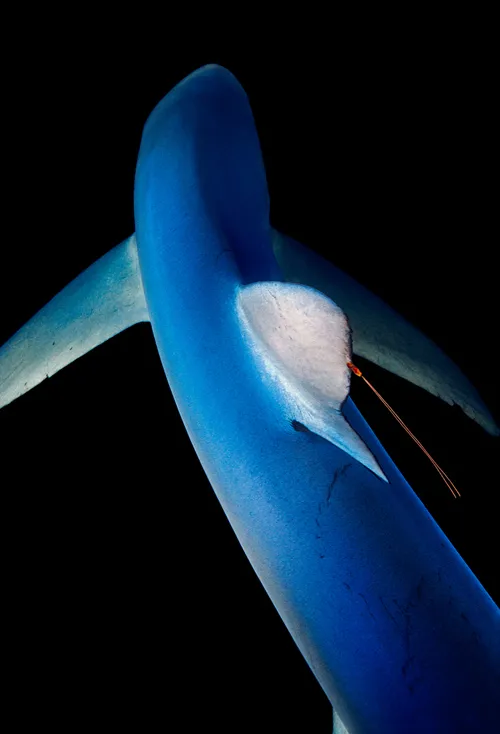Blue Shark

Named for the radiant blue color on its back and sides, the blue shark (Prionace glauca) traverses the world’s temperate and tropical seas. Known for traveling great distances and being a swift predator, blue sharks feed on squid, bony fish, and marine mammal carrion. A red-colored female copepod (Echthrogaleus coleoptratus) has hitched a ride on the shark's dorsal fin. The two long, red tails on the copepod are her egg sacs, each containing many hundreds of poker chip-like eggs stacked atop one another. This copepod species is commonly found on the blue shark.
However fast the blue shark may be, its numbers are declining due to bycatch, sport and commercial fisheries, and illegal poaching. The International Union for the Conservation of Nature (IUCN) estimates that 20 million blue sharks are caught each year and has classified the species as "Near-Threatened."
For nearly 30 years, Skerry has been swimming with and photographing sharks, including great whites, tigers, bulls, blacktips, and great hammerheads all over the world. In his first blog post for the Smithsonian Ocean Portal, "Swimming with Sharks," Skerry reflects on these exhilarating experiences.

